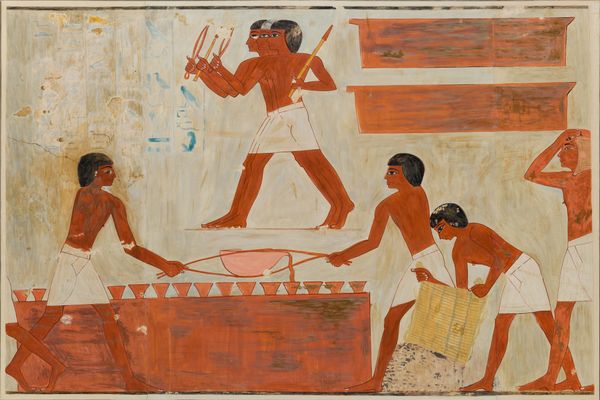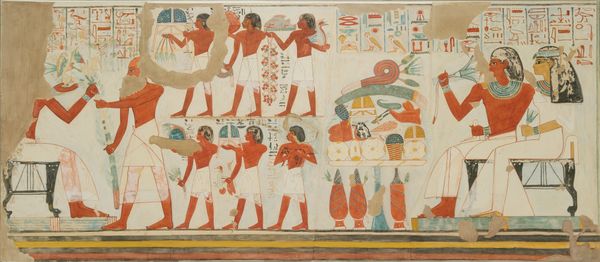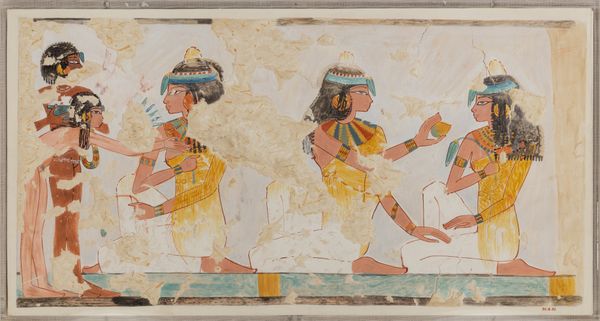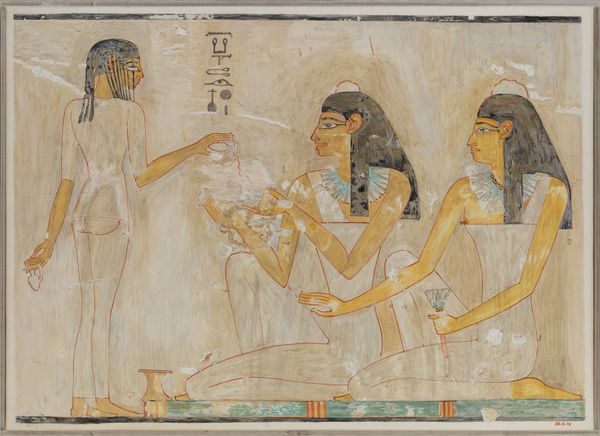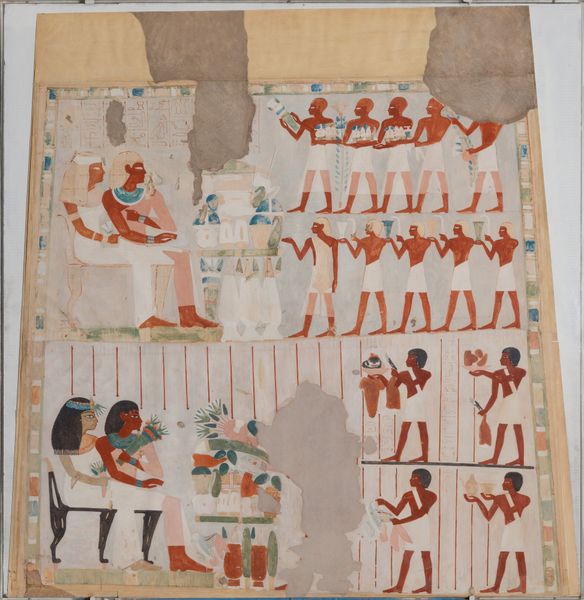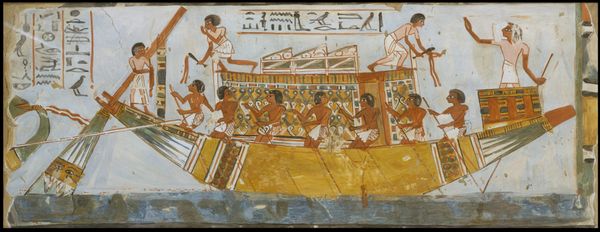
tempera, painting, watercolor
#
portrait
#
food
#
water colours
#
narrative-art
#
tempera
#
painting
#
ancient-egyptian-art
#
figuration
#
watercolor
#
egypt
#
ancient-mediterranean
#
genre-painting
#
trompe-l'oeil
#
watercolor
Dimensions: facsimile: h. 45 cm (17 11/16 in); w. 170 cm (66 15/16 in) scale 1:1 framed: h. 48.3 cm (19 in); w. 174 cm (68 1/2 in)
Copyright: Public Domain
Editor: Here we have "Women Preparing Food, Tomb of Djari," dating back to 2060 BC. It's currently housed at the Metropolitan Museum of Art. The medium looks like tempera or watercolor. What strikes me is the regimented, almost rhythmic composition – a series of figures captured in similar poses performing repetitive actions. What do you see in this piece, considering its visual language? Curator: It is through a formal lens that we can truly appreciate the genius of this work. Notice the linearity, how the artist segments the composition, almost like a frieze. Each figure is defined by a clear outline, and filled with flat areas of colour. The artist meticulously uses colour to delineate the roles of the figures within the food preparation sequence. Editor: Yes, the flat colors and strong outlines are quite striking. The figures are clearly defined, yet they lack a certain depth. Is this flatness intentional, a conscious choice? Curator: Indeed, the two-dimensionality is not a deficiency but rather a defining characteristic of Egyptian art, especially of this period. Note how the artist represents each action from its most recognizable angle. It prioritizes clarity and order over naturalistic representation. This adherence to convention dictates the very structure of the painting. How does this affect your understanding? Editor: I see your point. By foregoing realism, the artwork emphasizes the symbolic and conceptual nature of the depicted actions. It’s less about the specific individuals and more about the ritualistic act of food preparation. This order is reinforced through compositional repetition, as figures repeat poses to rhythmically create the work's progression. Curator: Precisely! Understanding these intrinsic formal choices unlocks deeper interpretations of the image. It moves us beyond mere surface-level reading into the language of the painting itself. Editor: I learned a lot! Thanks for making the visual language so accessible.
Comments
No comments
Be the first to comment and join the conversation on the ultimate creative platform.
